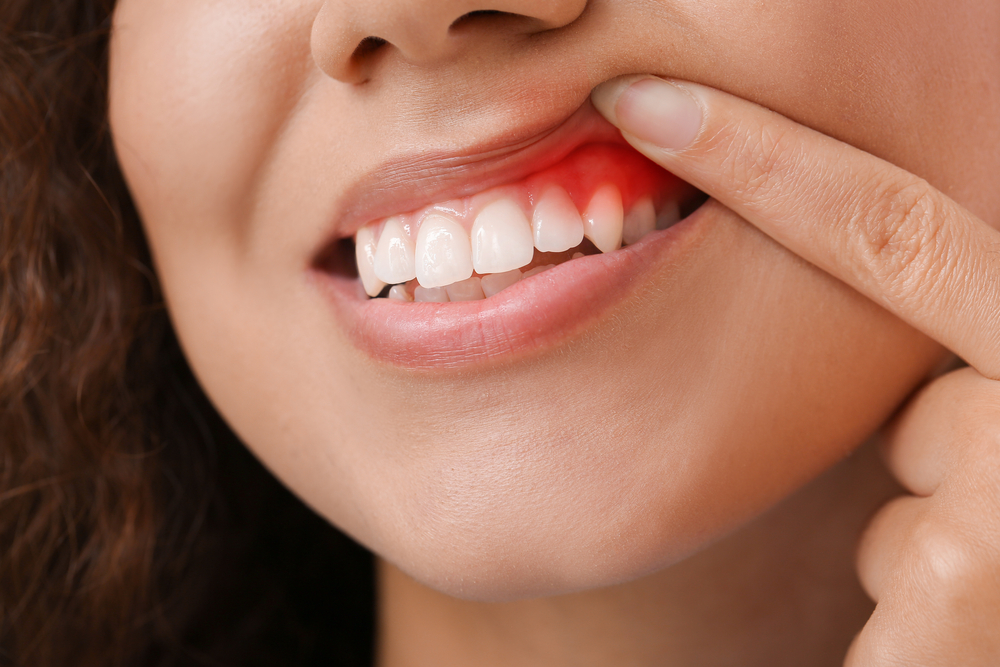What Is Advanced Periodontitis?
Advanced periodontitis occurs when the bone and tissues that support the teeth become severely infected and damaged. This condition is caused by an excessive buildup of plaque and tartar on the teeth and gums. When plaque isn’t removed through regular brushing and flossing, it can harden into tartar, which can only be removed by a professional dental cleaning.
As the tartar builds up on the teeth and gums, it can cause inflammation, swelling, and bleeding. Over time, the infection can spread to the bone and tissues that support the teeth, leading to tooth loss and other serious health problems.
Symptoms of Advanced Periodontal Disease
Advanced periodontitis can cause a wide range of symptoms, including:
- Gum Recession: The gums will start to pull away from the teeth, exposing the tooth roots. This can lead to sensitivity and an elongated appearance of the teeth.
- Gum Inflammation: The gums may appear red, swollen, and tender. They may bleed easily, especially during brushing or flossing.
- Gum Pocket Formation: Deep periodontal pockets can develop between the teeth and gums. These pockets trap bacteria and debris, leading to further infection and damage.
- Bad Breath (Halitosis): Persistent bad breath that doesn’t improve with oral hygiene can be a sign of advanced periodontal disease. The odor is typically caused by the bacteria present in the gum pockets.
- Tooth Mobility: As the supporting structures of the teeth, including the bone, ligaments, and connective tissue, become damaged, the teeth may loosen and shift out of their normal position.
- Pain or Discomfort: Advanced periodontal disease can cause discomfort or pain, especially while chewing or applying pressure to the affected teeth.
- Abscess Formation: In some cases, a pus-filled pocket or abscess may form between the tooth and gums. This can cause severe pain, swelling, and a foul taste in the mouth.
- Changes in Bite: As the teeth shift due to gum and bone loss, the bite pattern may change, resulting in an uncomfortable or uneven bite.
- Gum Ulceration: In severe cases, the gums may develop open sores or ulcers that are painful and prone to infection.
If you’re experiencing any of these symptoms, schedule an appointment with your dentist right away.
Advanced Periodontal Disease Treatment Options
Treatment for advanced periodontal disease can be limited. Although there’s no way to reverse the damage like one could with gingivitis, your dentists can stop the damage from going further by recommending one or more of these treatments.
Periodontal Surgery
In some cases, surgical intervention may be necessary to treat advanced periodontal disease. Procedures such as flap surgery, bone grafting, or guided tissue regeneration may be performed to access deeper areas of infection, remove diseased tissue, and promote tissue regeneration and healthy bone growth.
Laser Therapy
Laser-assisted periodontal therapy is an alternative to traditional surgery. It involves using a dental laser to remove diseased tissue and bacteria while promoting gum tissue regeneration.
Antibiotic Therapy
In some cases of severe gum disease, oral antibiotics may be prescribed to help control the gum infection. They can be taken orally or applied directly to the infected areas, such as in the form of antimicrobial mouth rinses or gels.
Scaling and Root Planing
Scaling and root planing is a deep cleaning procedure performed by a dental professional. It involves removing plaque and tartar buildup from above and below the gum line (scaling) and smoothing the tooth roots to eliminate bacterial toxins (root planing). This procedure helps remove the source of infection and promotes the healing of the gums.
Ongoing Maintenance and Periodontal Maintenance Therapy
After an initial periodontal treatment, regular follow-up visits with a dental professional are crucial. These visits typically include professional cleanings and ongoing monitoring of gum health to prevent the recurrence or progression of periodontal disease.
Improving Oral Hygiene
Good oral hygiene practices at home are essential for managing advanced periodontal disease. This includes regular brushing and flossing, using antibacterial mouth rinses, and incorporating interdental cleaning tools such as dental picks or water flossers to effectively remove plaque and bacteria from the gum line and between teeth.
Advanced Periodontitis Prevention
The best way to prevent advanced gum disease is to practice good oral hygiene habits to avoid the onset of the disease. This includes brushing your teeth twice a day, flossing daily, and using an antiseptic mouthwash to kill bacteria.
You should also schedule regular dental checkups and cleanings with our Virginia Bay dentists to ensure that any early signs of gum disease are detected and treated promptly.
Other ways to prevent advanced gum disease include:
- Quitting Smoking: Smoking is a major risk factor for gum disease, and quitting smoking can help reduce your risk.
- Eating a Healthy Diet: A diet that’s rich in fruits and vegetables and low in sugar can help promote healthy teeth and gums.
- Managing Stress: Stress can weaken your immune system, making it harder for your body to fight off infections like gum disease. Finding healthy ways to manage stress, such as exercise, meditation, or therapy, can help reduce your risk of gum disease.


